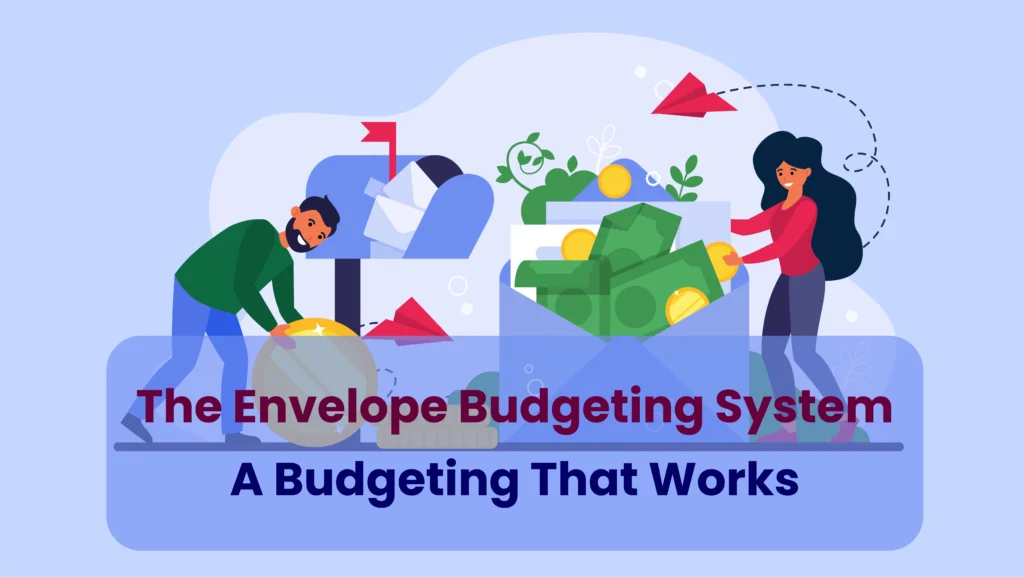The 5 Types of Procrastinators and How to Deal with Each
We’ve all been guilty of procrastination at some point. Whether it’s delaying a project at work, putting off studying, or avoiding chores, procrastination can sneak into our lives in various ways. But did you know that not all procrastinators are the same? There are different types of procrastinators, each with unique habits and motivations behind their delays. Understanding which type of procrastinator you are—or which type you’re dealing with—can help you adopt the right strategies to overcome procrastination and boost productivity.
In this post, we’ll explore the five main types of procrastinators and offer specific strategies for dealing with each. By identifying your procrastination style, you can better understand why you delay tasks and take steps to break the cycle.

Type 1: The Perfectionist Procrastinator
Perfectionism may seem like a positive trait, but for many, it’s a major driver of procrastination. The perfectionist procrastinator delays tasks because they fear the end result won’t meet their impossibly high standards. They would rather delay starting or completing a task than risk it being less than perfect.
Why Perfectionism Leads to Procrastination
The perfectionist procrastinator is often paralyzed by the fear of failure or not producing flawless work. They may spend excessive time planning, revising, or worrying about how their work will be judged, which leads them to put off starting until they feel they can do it perfectly. This focus on perfection creates a barrier to action, and as a result, deadlines approach with little progress made.
For example, a perfectionist might delay starting a report because they’re afraid the first draft won’t be good enough. They’ll wait until the last minute, hoping that inspiration strikes and that they can create the “perfect” version of their work in one sitting.
How to Deal with the Perfectionist Procrastinator
To break the cycle of perfectionism-fueled procrastination, focus on progress over perfection. Remind yourself that no task will ever be perfect, and that it’s better to make steady progress than to wait for the ideal conditions to start.
Here are a few strategies for dealing with perfectionism:
- Set realistic standards: Recognize that doing your best doesn’t mean achieving perfection. Aim for excellence, but don’t let the pursuit of perfection keep you from getting started.
- Break tasks into smaller steps: Perfectionists often get overwhelmed by large projects. Breaking the task into smaller, manageable parts makes it easier to start and reduces the pressure to deliver a perfect result immediately.
- Set time limits: Perfectionists can get stuck in an endless cycle of revisions. Setting a time limit for each stage of a task can help prevent overthinking and push you toward completion.
Type 2: The Overwhelmed Procrastinator
The overwhelmed procrastinator feels paralyzed when faced with too many tasks or a single, large project. This type of procrastinator often delays action because they don’t know where to start, and the sheer volume of work makes the task seem impossible to tackle.
Feeling Overwhelmed and Paralyzed by Too Much to Do
Overwhelmed procrastinators may experience anxiety or stress because they feel buried under a mountain of tasks. This can happen when you’re juggling multiple responsibilities at once or when you’re tasked with a complex project that seems too big to handle. The result is often paralysis—because it’s hard to decide where to begin, you end up not starting at all.
For example, if you have a long to-do list at work and are also managing personal responsibilities, the accumulation of tasks can create a sense of overwhelm. You might delay tasks, hoping that by putting them off, they’ll somehow become more manageable later. However, the longer you wait, the more overwhelming the workload becomes.
How to Help the Overwhelmed Procrastinator
Dealing with procrastination driven by overwhelm requires breaking tasks down and prioritizing effectively. Here’s how you can do that:
- Prioritize tasks using the Eisenhower Matrix: Categorize tasks based on their urgency and importance. Focus on high-priority tasks first, and delegate or delay less critical ones. This reduces the sense of overwhelm and gives you a clear path forward.
- Break tasks into smaller steps: Similar to perfectionists, overwhelmed procrastinators can benefit from dividing large projects into smaller, more manageable parts. Each completed step will give you a sense of accomplishment and motivate you to continue.
- Use time-blocking: Allocate specific time slots for each task on your to-do list. This method helps you focus on one thing at a time, reducing the feeling of being pulled in multiple directions.
≫ Related Post: The Link Between Procrastination and Perfectionism
Type 3: The Avoidant Procrastinator
The avoidant procrastinator delays tasks as a way to avoid uncomfortable emotions, such as stress, fear of failure, or even boredom. For this type of procrastinator, avoidance isn’t about being lazy—it’s about protecting themselves from negative emotions associated with the task.
Procrastination as Emotional Avoidance
Avoidant procrastinators may avoid tasks that they find emotionally draining, stressful, or anxiety-inducing. For example, someone might procrastinate on preparing for a difficult conversation because they fear confrontation or rejection. Another might delay writing a report because they’re anxious about not doing a good job.
This form of procrastination can be particularly harmful because it reinforces negative emotional patterns. The more you avoid the task, the more you associate it with discomfort, which increases your likelihood of procrastinating on similar tasks in the future.
How to Address Emotional Avoidance in Procrastination
The key to overcoming emotional avoidance is to manage the emotional response tied to the task. Here are a few strategies:
- Practice mindfulness: Mindfulness techniques, such as deep breathing or meditation, can help reduce anxiety and bring your focus back to the present. When you feel overwhelmed by the emotional weight of a task, take a few moments to center yourself before proceeding.
- Reframe negative thoughts: Instead of focusing on the potential negative outcomes, think about the benefits of completing the task. For example, instead of fearing failure, focus on how completing the task will improve your skills or advance your goals.
- Start with small steps: Avoidant procrastinators often benefit from tackling a small portion of the task first. By breaking the task into tiny steps, you can ease into the process without feeling overwhelmed by the emotional pressure.
Type 4: The Thrill-Seeker Procrastinator
The thrill-seeker procrastinator thrives on the adrenaline rush of working under pressure. These individuals intentionally delay tasks because they believe they perform better when the deadline is near. While this approach might work for some tasks, it often leads to last-minute scrambling, lower-quality work, and increased stress.
Seeking the Rush of Last-Minute Deadlines
Thrill-seekers often claim that they are more productive when the deadline is close, enjoying the sense of urgency and heightened focus that comes with it. However, this can create a pattern of always waiting until the last minute, which increases the likelihood of errors, missed details, or burnout.
For example, a student might wait until the night before a paper is due to begin writing, enjoying the challenge of racing against the clock. While they may complete the paper in time, the quality of work likely suffers, and the stress of rushing to meet the deadline can take a toll.
How to Manage the Thrill-Seeker Procrastinator
To reduce the habit of last-minute rushing, thrill-seekers can benefit from strategies that create a sense of urgency earlier in the process:
- Set artificial deadlines: Instead of waiting for the actual deadline, set your own earlier deadlines to create the same sense of urgency. This way, you can still enjoy the adrenaline rush while allowing time for revisions and improvements.
- Use time-blocking: Allocate specific time blocks to work on tasks before the final deadline approaches. By scheduling work ahead of time, you ensure that you’re making progress without needing to rely on last-minute pressure.
- Create a reward system: Motivate yourself to finish tasks ahead of time by setting up a reward system. For example, reward yourself with a break or a treat for completing a task well before the deadline. This helps you associate early completion with positive outcomes.
Type 5: The Indecisive Procrastinator
The indecisive procrastinator delays tasks because they struggle with decision-making. Whether it’s overthinking options, doubting their choices, or fearing they’ll make the wrong decision, this type of procrastinator is stuck in paralysis by analysis.
Paralysis by Analysis: Overthinking Decisions
Indecisive procrastinators often spend so much time analyzing their options that they never move forward. They may fear that committing to a particular course of action will lead to mistakes or missed opportunities, so they keep researching, planning, and considering without taking action.
For example, someone may spend hours researching the best software to use for a project, but never actually start the project because they’re afraid of choosing the wrong tool.
How to Help the Indecisive Procrastinator
To overcome paralysis by analysis, indecisive procrastinators need to simplify decision-making and focus on action:
- Limit decision-making time: Set a time limit for how long you’ll spend researching or considering options. Once the time is up, commit to a decision and move forward.
- Use the two-minute rule: If a task can be completed in two minutes or less, do it immediately. This rule helps indecisive procrastinators get out of their heads and start taking action.
- Focus on progress, not perfection: Remind yourself that no decision is perfect, and any action is better than inaction. By focusing on making progress rather than waiting for the perfect decision, you can overcome the habit of indecision.
Overarching Strategies for All Procrastinator Types
While each procrastinator type has unique challenges, there are overarching strategies that can help anyone overcome procrastination.
Setting SMART Goals
The SMART goal framework is an excellent tool for procrastinators of all types. SMART goals are:
- Specific: Clearly define what you want to accomplish.
- Measurable: Establish criteria to track progress.
- Achievable: Set realistic goals that are within your reach.
- Relevant: Ensure the goal aligns with your broader objectives.
- Time-bound: Set deadlines to create urgency.
By setting SMART goals, you can create a clear roadmap for completing tasks, making it easier to stay focused and motivated.
Leveraging Accountability and Support
Accountability can be a powerful motivator for procrastinators. Whether it’s an accountability partner, a mentor, or a productivity app, having someone or something to check in with can help you stay on track. Regular check-ins, updates, and reminders can reduce the likelihood of procrastination by keeping you accountable for your progress.
Conclusion: Breaking Free from Procrastination for Greater Productivity
Procrastination can take many forms, and understanding the type of procrastinator you are is the first step to overcoming it. Whether you’re a perfectionist, overwhelmed, avoidant, thrill-seeker, or indecisive, there are specific strategies that can help you break the cycle of delay and start taking action.
By addressing the emotional, psychological, and practical barriers to productivity, you can overcome procrastination and achieve your goals with greater ease and confidence. Remember, breaking free from procrastination isn’t about being perfect—it’s about making steady progress, one step at a time.
















